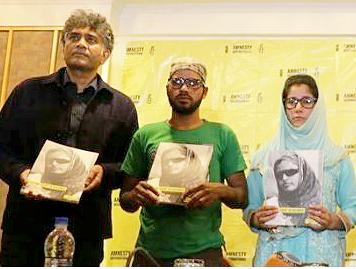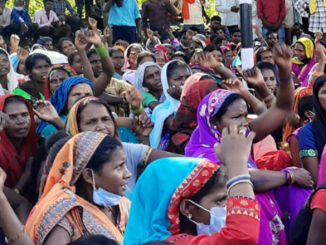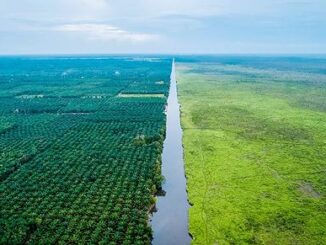
NEW DELHI, India, October 5, 2020 (ENS) – The freezing of Amnesty International India’s bank accounts by the Government of India on September 10 has brought all the work being done by the human rights organization to a grinding halt. Amnesty has been compelled to lay off staff in India and pause all its ongoing campaign and research work.
“This is latest in the incessant witchhunt of human rights organizations by the Government of India over unfounded and motivated allegations,” Amnesty International India, AII, alleged.

From October 2018 and throughout 2019, the Government of India’s Enforcement Directorate, a financial investigation agency under the Ministry of Finance, and other government agencies conducted raids on the AII offices and conducted a media campaign against the human rights organization over unsubstantiated allegations of violations of Foreign Contribution Regulation Act.
Avinash Kumar, executive director of Amnesty International India, said, “The continuing crackdown on Amnesty International India over the last two years and the complete freezing of bank accounts is not accidental. The constant harassment by government agencies, including the Enforcement Directorate, is a result of our unequivocal calls for transparency in the government, more recently for accountability of the Delhi police and the Government of India regarding the grave human rights violations in Delhi riots and Jammu & Kashmir.”
After the partition of India in 1947, both India and Pakistan claimed the former princely state of Jammu and Kashmir, with Pakistan recognizing Chinese sovereignty over parts of the region since 1962. India controls about 55 percent of the land area of the region that includes Jammu, the Kashmir Valley, most of Ladakh, the Siachen Glacier and 70 percent of its population. Pakistan controls roughly 30 percent of the land area, and the other 15 percent of the mountainous region is largely uninhabited.
Scholars have found that Indian forces committed many human rights abuses and acts of terror against the Kashmiri civilian population – extrajudicial killings, rape, torture, and enforced disappearances.

A UN human rights report on the situation in India-Administered Kashmir and Pakistan-Administered Kashmir from May 2018 to April 2019, says the number of civilian casualties reported during the 12-month period was the highest in over a decade. The report noted that neither India nor Pakistan have taken any concrete steps to address the numerous concerns raised in the first UN report on the human rights situation in Kashmir released in June 2018.
Amnesty International has accused the Indian government of refusing to prosecute perpetrators of abuses in the region.
“For a movement that has done nothing but raise its voices against injustice, this latest attack is akin to freezing dissent,” Kumar protested.
Many of the problems in Kashmir and Jammu are environmental – pollution of freshwater bodies, air pollution, lack of proper waste management, deforestation, loss of biodiversity, desertification, waterlogging, and coping with natural and man-made disasters.
Writing June 3, 2019, in the journal “Democracy & Society,” Hashim Pasha explains that, “At its heart, the Kashmir conflict between India and Pakistan is an environmental conflict, one centered primarily around water. However distant this conflict may seem to US policymakers, it is the crux of instability in the South & Central Asian region. Nuclear-armed India and Pakistan will have a combined population of two billion by 2050 according to UN estimates. India and Pakistan are already water-stressed nations…”
“Over-population and subsequent high water-stress position the Kashmir conflict as one of the most plausible flashpoints for major lethal conflict in recent history. Re-framing this conflict from one that is political, religious and territorial, into one that is in its essence environmental, may present opportunities to move forward that have been otherwise unseen,” Pasha proposed.

In August 2019, the Government of India revoked the special status of Jammu and Kashmir guaranteed under the Indian Constitution and divided the state into two union territories. This was preceded and followed by a region-wide clampdown on civil liberties, increased militarization, a communications blackout and detention of key political leaders.
On February 13, the Supreme Court of India, acting on a petition filed by wildlife groups, ordered the eviction of all forest dwellers in India, after their claims to remain on their traditionally-held land was rejected by the states under the Forest Rights Act. According to the Ministry of Tribal Affairs, nearly two million families were affected.
The Central Government intervened, and on February 28, the Court put the order on hold while it awaited information from states to ascertain whether they had followed due process in rejecting the claims. The Court still awaits responses from all states.
As part of the Nobel Prize-winning Amnesty International group, Amnesty International India claims to hold itself to the highest evidentiary standards.
“Our work in India, as elsewhere, is to uphold universal human rights and build a global movement of people who take injustice personally. These are the same values that are enshrined in the Constitution of India and flow from a long and rich Indian tradition of pluralism, tolerance and peaceful dissent,” AII stated.
Kumar points out that Amnesty International India stands in full compliance with all applicable Indian and international laws. For human rights work in India, it operates through a distinct model of raising funds domestically.
More than four million Indians have supported Amnesty International India’s work in the last eight years and around 100,000 Indians have made financial contributions. The fact that the Government of India is now portraying this lawful fundraising model as money-laundering is evidence that the overbroad legal framework is “maliciously activated when human rights activists and groups challenge the government’s grave inactions and excesses,” said Amnesty International India.
The attacks on Amnesty International India and other outspoken human rights organizations, activists and human rights defenders are only an extension of the various repressive policies and sustained assault by the government on those who speak truth to power.
“Treating human rights organizations like criminal enterprises and dissenting individuals as criminals without any credible evidence is a deliberate attempt by the Enforcement Directorate and Government of India to stoke a climate of fear and dismantle the critical voices in India,” said Kumar.
“It reeks of fear and repression, ignores the human cost to this crackdown particularly during a pandemic and violates people’s basic rights to freedom of speech and expression, assembly, and association guaranteed by the Indian Constitution and international human rights law,” said Kumar. “Instead, as a global power and a member of the United Nations Human Rights Council, India must fearlessly welcome calls for accountability and justice.”

Copyright Environment News Service (ENS) 2020. All rights reserved.
© 2020, Environment News Service. All rights reserved. Content may be quoted only with proper attribution and a direct link to the original article. Full reproduction is prohibited.



